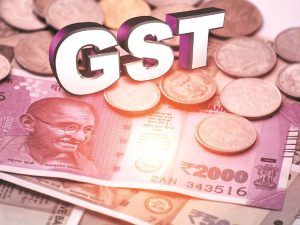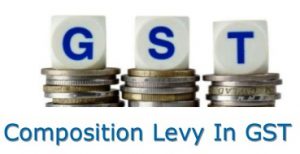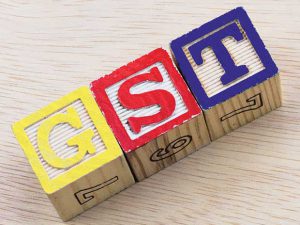What is composition scheme in GST and its benefits?
What is composition scheme under GST?
GST (Goods and Service Tax) has brought a new regime of business compliance in India. Large organisations may have the requisite resources and the business expertise to address these requirements. But, the Small and Medium Enterprises (SMEs) and startups are struggling to comply with these provisions. To resolve such issues, government introduced a scheme which is under VAT law. Assessee has to pay the tax at a minimum rate based on his turnover. For taxpayers, there is a very simple and an easier scheme been introduced (i.e. Composition scheme). Small taxpayers can get rid of these tedious formalities of GST at a fixed rate of turnover. These can be better opting by the taxpayer whose turnover is less than Rs.1 crore. To opt this, a taxpayer is required to file a summarized returns on a quarterly basis instead of three monthly returns.

Who can opt for GST composition scheme?
One Nation One Tax Scheme (GST), which clubs all the indirect taxes into one and also the beneficiary composition scheme for small businesses. This scheme will make compliance with hassle free tax laws which is eligible for businesses.

Eligibility:
Registered under composition scheme is optional, any business which has a turnover less than Rs.50 lakh can opt for this scheme. If suppose the turnover crosses the above mentioned limit, then he becomes ineligible and need to take the registration for the regular scheme. There are some conditions to be fulfilled before opting for the composition scheme. They are as follows:

- Any assessee who deals in supplying of goods can opt for this scheme, it is not suitable for the service providers. Restaurant service providers are excluded.
- Only intra-state supply of goods is eligible, there should not be any inter-state supply of goods.
- The dealer who supplies goods through electronic commerce operator will be barred from registered which is under composition scheme. For example, any dealer or seller named as “ABC” sells his products through flipkart or amazon, then that “ABC” cannot opt for the composition scheme.
- Under composition scheme, the taxes can be levied to all the business verticals with the same PAN. A taxable person will not have the option to select one for composition scheme and opt to pay taxes for other. For example, a taxable person has the following business verticals which are separately registered – sale of mobiles, sale of footwear, Franchisee of any restaurant. Here the composition scheme will be available for the three business verticals.
- If the person is not eligible for the composition scheme, the tax liability would be “interest +tax +penalty” which may equal to the amount of tax.
Benefits of GST composition scheme:
Less compliance:
As per the existing system, GST has to file minimum of 3 returns monthly and one annual return. To be precise, it is compelled to file 37 returns in a year or else the penalty will be levied for non-compliance. For manufacturers and the small suppliers, it is quite difficult to maintain the detailed book of accounts on a daily basis and record every transaction with the supporting documents.
Under the composition scheme, only a quarterly return will be uploaded through GSTR-4 by:
- 18th July – 1st
- 18th October – 2nd
- 18th January – 3rd
- 18th April – 4th
This would ease the process for small and medium sized enterprises, so that they can focus on their business rather than getting into the compliance procedures.
Tax liability will be reduced:
Rate structure is another advantage of being registered with the composition scheme.
The rate structure varies as 1% for manufacturers, 2.5% for restaurant service providers and 0.5% for other supplies of turnover.
High Liquidity:
For a normal taxation method in GST, the input tax credit can be availed only if the supplier files the return. The supplier has to pay the tax at a standard rate, and then only the taxpayer can get the credit for his tax. But, in composition, the dealer need not worry about the supplier filing return as he cannot take credit and would pay the tax at a nominal rate.
Transitional provisions:
Any taxpayer in composition scheme under current regime and transits to the regular taxation as per GST will be allowed to take the credits of input, finished goods and semi-finished goods on the day which is immediately preceding the date from which they opt to be a regular tax payer.
The inputs can be availed with few conditions such as:
- Inputs or goods are meant for making the taxable outward supplies under GST provisions.
- Under composition scheme, dealer could not claim the input credits.
- The taxpayers are claiming the input credits on goods, so such goods can be eligible for credits under GST regime.
- Valid legal document of input tax credit need to be produced by the taxpayer i.e. he must possess an invoice for taxes or duties been paid as an evidence.
- Those invoices should not be older than 12 months before the appointed date.
When a taxpayer is shifting from normal scheme to composition scheme, the taxpayer need to pay an amount which should be equal to the credit of input tax in respect to those inputs which is an immediately preceding date from the date of such switchover. Any balance which is left in ITC account after the specified payment, then that balance will be lapsed and not usable.
We are one of the legal business service providers in the name as “Solubilis Corporate Services”, who are very efficient and reliable in terms of providing business services at an affordable cost and the process will be completed within the shortest duration of time


